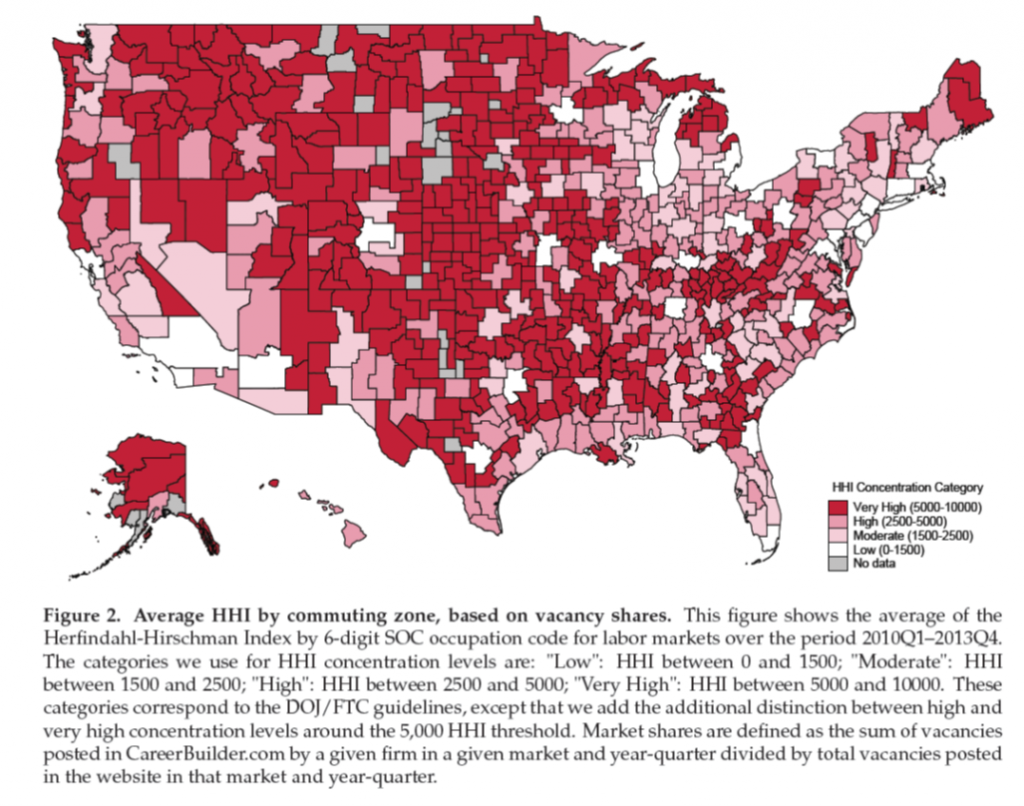An argument increasingly being made is that inflation is being built into wage demands in a context of really tight labor markets, and this would induce a wage-price spiral. This outcome is plausible, but I think it’s useful to compare wages against CPI to see if wages are really abnormally high, and are starting to rise in tandem with inflation. [text corrected 8/13]
Category Archives: labor market
Bram, Karahan & Moore: “Minimum Wage Impacts along the New York-Pennsylvania Border”
From conclusion to the Liberty Street post:
In gauging the effects of New York’s escalating minimum wage on two sizable low-wage industry sectors, one growing and the other shrinking, we find that it appears to have had a positive effect on average wages but no discernible effect on employment. It is possible that there was some negative effect on weekly hours worked, though that would imply an even stronger upward effect on hourly wages. However, longer-term effects, if any, remain to be seen. It is certainly conceivable that minimum-wage differentials may affect decisions on firm location, business investment, lease renewal, and the like over a longer time horizon. Moreover, as currently scheduled, the phasing in of the higher minimum wage across upstate New York still has a long way to go. Thus, we will continue to monitor local trends in both employment and wages—particularly in these lower-wage sectors.
The Effect of Proposed Minimum Wage Legislation
Here’s a time series of the real minimum wage, under the Sanders proposal.
Labor Market Monopsony Estimated
Azar, Marinescu, Steinbaum (2018) as SSRN [NBER WP version] [preprint at J.Human Resource]:
Addendum, 2/8 8am Pacific:
And here is a very recent survey of labor market monopsony: Manning, ILR (2021).
A Review of Minimum Wage Effects
From Alan Manning, in Journal of Economic Perspectives (a journal of the American Economic Association), “The Elusive Employment Effect of the Minimum Wage”:
Labor Force Developments
Nationwide, labor force down 2.7% from February, and down 2.4% from year ago.
Interpreting the unemployment numbers
The Bureau of Labor Statistics announced Friday that 2.5 million more Americans were working in May than in April. That’s the biggest monthly increase since 1946, both in terms of the number of workers and as a percentage of the workforce. The unemployment rate dropped from 14.7% in April to 13.3% in May, the biggest monthly drop since 1950. All this is very good news. But there are also indications that we are in a deeper hole than the headline numbers suggest. Here I explain why I believe the true unemployment rate in May was a number more like 19.8%.
Continue reading
Does Policy Uncertainty Matter?
The Atlanta Fed along w/Bloom (Stanford) and Davis (Chicago) survey business operators and finds it does!
Measuring unemployment and labor-force participation
The underlying data from which the U.S. unemployment rate and labor-force participation rate are calculated contain numerous inconsistencies– if one of the numbers economists use is correct, another must be wrong. I’ve recently completed a research paper with Hie Joo Ahn that summarizes these inconsistencies and proposes a reconciliation.
Continue reading
Did Minnesota’s Minimum Wage Hikes Hit the Fast Food Sector Hard?
I don’t think so. But you be the judge:
Continue reading